Forests, whether Tolkien's Lothlórien or the woods behind the schoolyard, hold a magic unequaled. They envelop amicably, protect from view and shelter from heat. Forests reveal themselves only gradually: The prospect of a new sight past the next group of trees is enough to keep us walking. While they are the cradle of our most treasured garden plants, forests also have a thing or two to teach us about garden design.
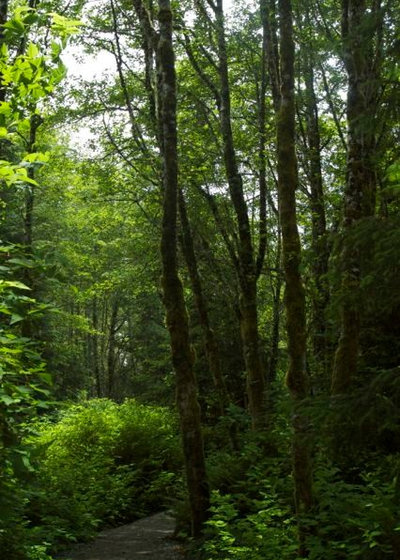
CYAN Horticulture
Simply put, a forest is a large group of trees. While forests may be found all over the planet, their components vary greatly.
In the northern United States, conifers dominate; their dense canopies often restrict understory growth. Elsewhere, deciduous forests offer bright and spectacular springtime displays. In either case, there are plants that will thrive and satisfy the most demanding gardeners.
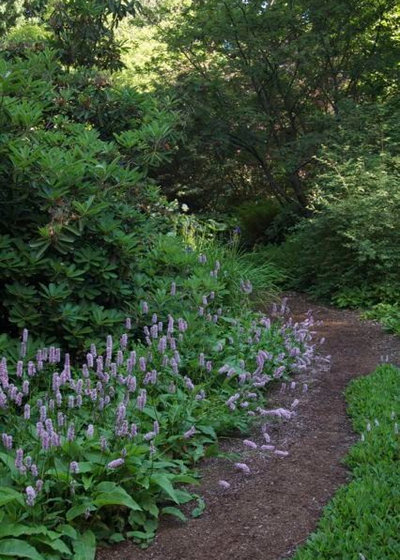
CYAN Horticulture
Most woodland gardens are located between existing trees or in the shadow of surrounding buildings.
At the University of British Columbia, the Asian Woodland Garden (shown here) rolls under gigantic yet sparse
Douglas firs. Plants adore them! Note the layering of plants, from taller shrubs in the back to ground-covering perennials alongside the mulch path. At the forefront lies a floriferous
Polygonum (Polygonum bistorta), hardy throughout the coldest areas of North America.
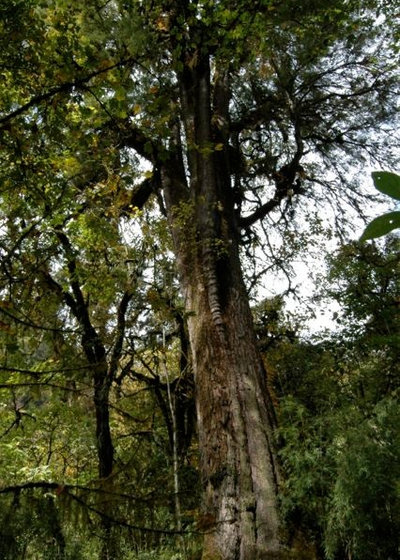
CYAN Horticulture
Even bigger is this
Himalayan hemlock (Tsuga dumosa), photographed in Sikkim, India. The filtered light trickling through this kind of loose canopy is most appreciated by woodland plants.
An arborist can quickly thin out trees that become too dense, greatly facilitating your garden project.
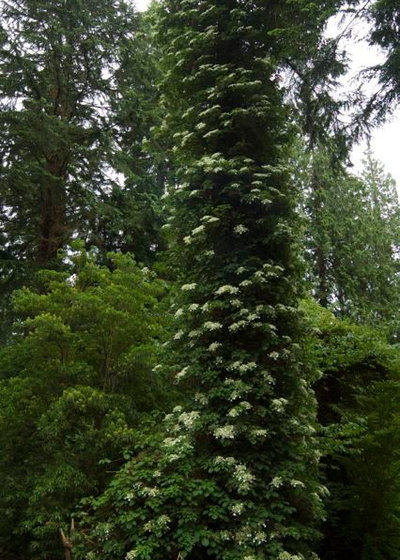
CYAN Horticulture
When blessed with mature trees, we can take advantage of the trunks to support a few choice vining plants, like this very hardy
climbing hydrangea (Hydrangea petiolaris). Ivy should not be considered — it is invasive and too vigorous.
Also, if there are any dead trees that must be cut down, it is a good idea to leave 6 feet or more of the trunk standing. Trunks make perfect supports for vines.
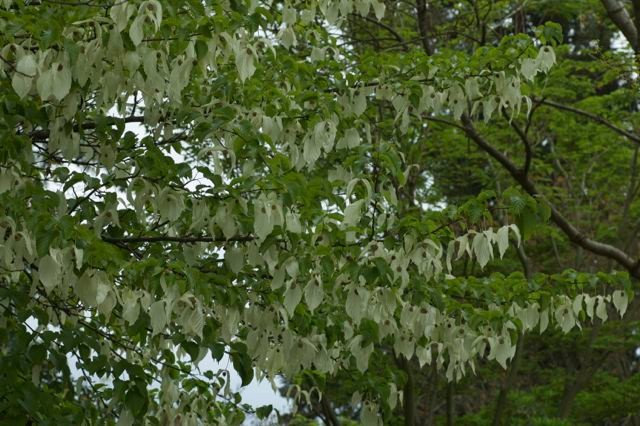
CYAN Horticulture
If you have space to add new trees, think of flowering ones like
magnolias and
Japanese snowbells (
Styrax japonicus, zones 5 to 8)
. In cool climates the dove tree (
Davidia involucrata, shown here) is an arresting addition. Its large, droopy inflorescences may be best enjoyed from below.
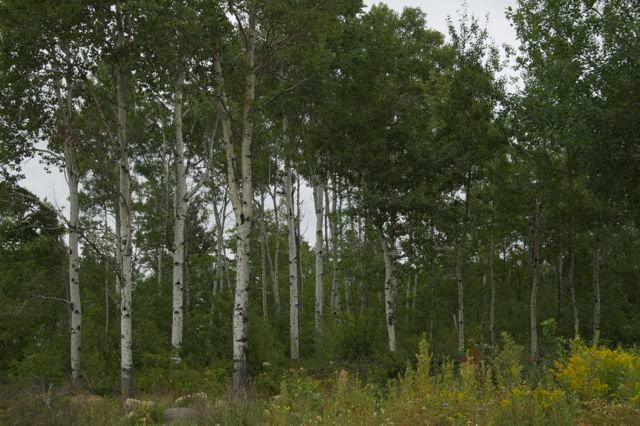
CYAN Horticulture
In the coldest climates,
larches, birches or
poplars (like the wild ones here) are great, fast-growing choices to create a new forest setting. Their shade, too, is never too dense.
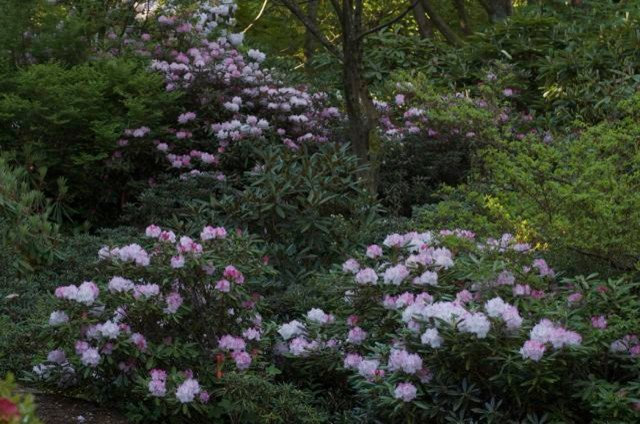
CYAN Horticulture
Once the canopy is taken care of, consider the intermediate shrub layer. Choices are endless and should, obviously, be synchronized to your regional conditions. To ensure prolonged interest, start with a basic foundation of evergreens and then add seasonal components.
These
rhododendrons, photographed at the University of British Columbia Botanical Garden, are particularly efficient.
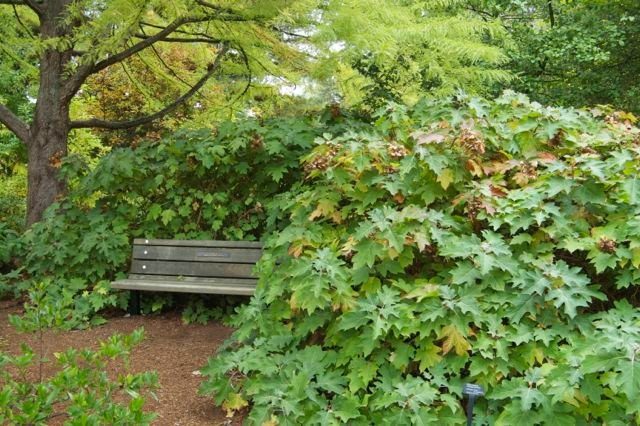
CYAN Horticulture
In colder climes and to add elements of seasonality, consider deciduous shrubs, like this oakleaf hydrangea (
Hydrangea quercifolia, zones 5 to 9), as well as perennials and bulbs.
Spring is always the key moment in the woodland, but fruit-bearing shrubs and autumn colors add interest until late fall.
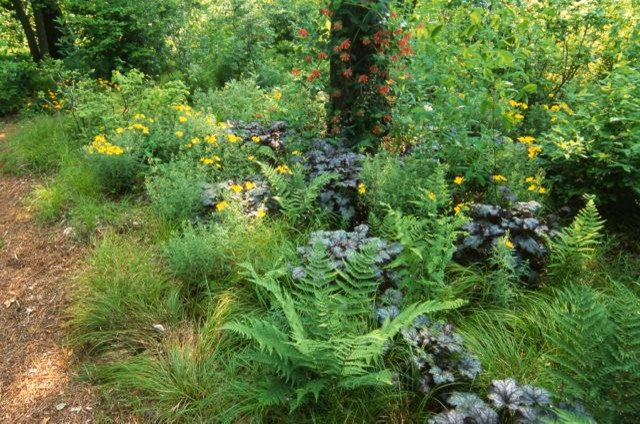
CYAN Horticulture
There are many ways to lay out smaller, herbaceous plants. A particularly rewarding and naturalistic way is shown in this private garden in New York, in chilly zone 5.
Ferns, grasses, heucheras, oenotheras and a few vines are irregularly mixed together, blanketing the entire ground between bigger shrubs.
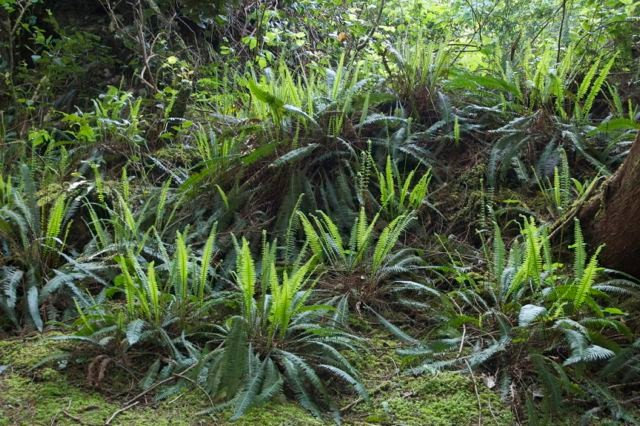
CYAN Horticulture
No forest would be complete without ferns. Of archaic origin, ferns — deciduous or evergreen — add a sophisticated touch to beds, all in frills and curls. This one,
Blechnum spicant, is native to the mild and moist Pacific Northwest. There are, however, ferns adapted to most climates around the world.
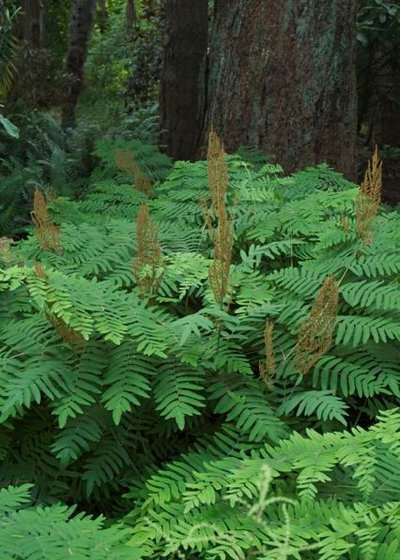
CYAN Horticulture
While some ferns boast foliage with patterns in silver and burgundy, others, like this
royal fern (
Osmunda regalis, zones 3 to 9), produce fruiting bodies colored like cinnamon. Notice how these echo the bark on the nearby tree.
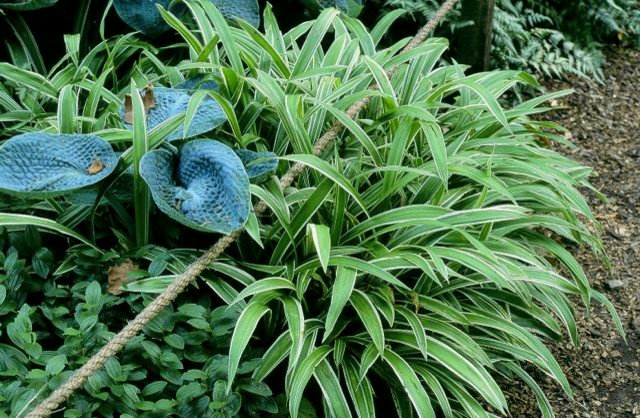
CYAN Horticulture
Many grasses and sedges are perfectly happy in the shade. This one, a
variegated broad-leaf sedge (
Carex siderosticha 'Variegata', zones 4 to 8), brilliantly sets off the ubiquitous and well-known
hostas.
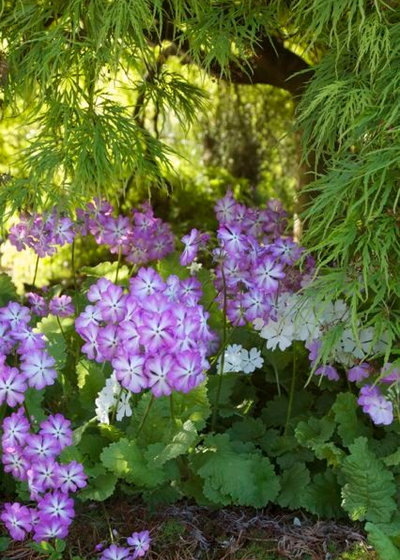
CYAN Horticulture
Those with the collector's bug will be amused endlessly in the woodland garden. They can acquire and grow treasures of all kinds and shapes, like this adorable
primrose, sheltered under the lacy canopy of a Japanese maple (
Acer palmatum var
dissectum).
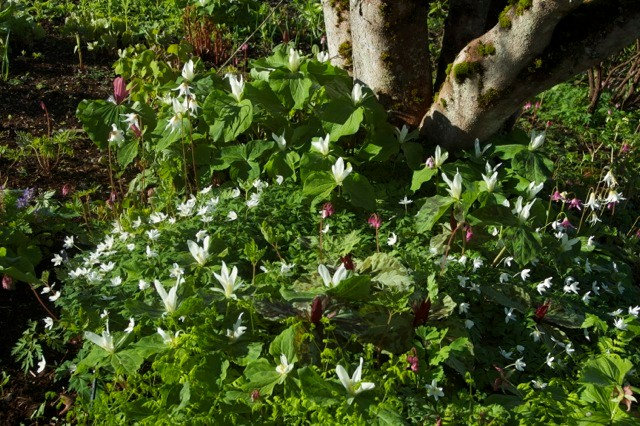
CYAN Horticulture
It might be because of its contained, somewhat closed-in feel that the woodland garden accommodates odds and ends so successfully, individual plants rather than large sweeps.
This charming planting of various
trilliums and
spring anemones creates a jewel box of a garden in Vancouver.
More in this series: Shape a Sea-Inspired Garden | Grasslands to Garden
Devise a Desert Garden | Mighty Mountain Gardens





